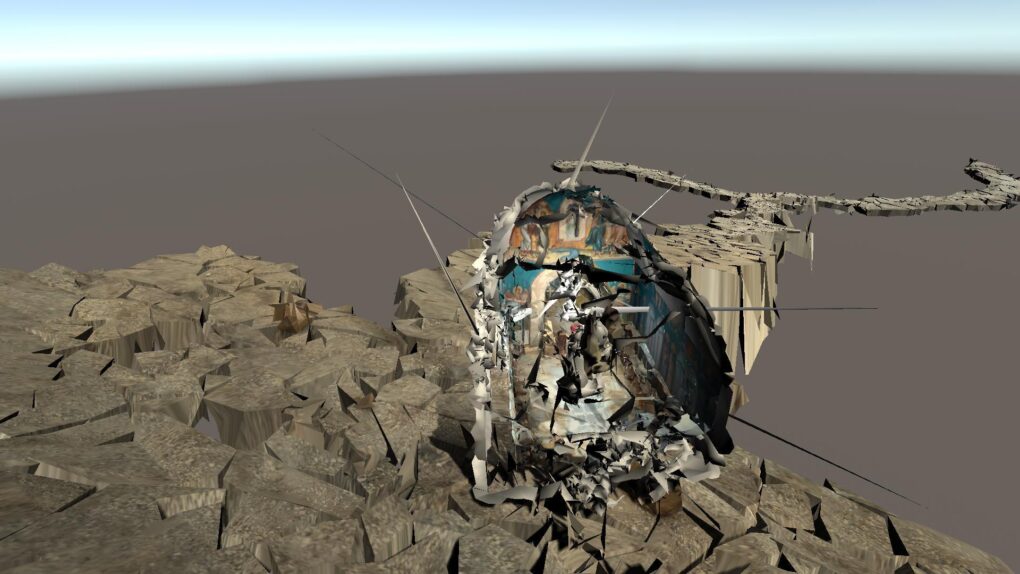Faisal Karadsheh
Memory of a Shrinking, Sinking, Living-Dead Sea
Memory of a Shrinking, Sinking, Living-Dead Sea explores a fragile, religious and regional site of healing, cyclically teetering on the brink of demise. Hundreds of millions of years ago, it was part of the Mediterranean Sea. Eventually, a graben formed, due to tectonic plate movements, becoming the salty lake we now know as the lowest point on Earth. It is also believed to be the ancient site of the destroyed Sodom & Gomorrah, serving as a cautionary tale against homosexuality within certain Abrahamic religious traditions. Today, the Dead Sea is shrinking and sinking, exacerbated by geopolitical tensions over regional water control. Since the mid 20th century, the Dead Sea is no longer being fed the way it was by the Jordan River. Maritime borders, continued extraction practices from Jordan, Israel and within the Palestinian occupied West Bank, and an ever changing climate has promoted its imminent extinction. The title itself nods to the notion of species on the verge of extinction, often termed as the “living-dead” by biologists. The Dead Sea, diminishing at a rate of about one meter annually, is also besieged by the emergence of sinkholes, triggering the collapse of vast surrounding areas of land. The ground is literally “too fragile to hold” the built environment, making it a disappearing space.
The project delves into the act of remembering - individually, collectively and ecologically - amidst loss. It began as a personal reflection on the process of memory formation between the self and the site, unfolding as a virtual reality soundwalk experience. Participants navigate through a LiDAR scan of the receded seabed while listening to juxtaposed temporal moments and field recordings from a trip along the Jordan River to the Dead Sea. Most recorded sounds of water were of small streams from the Jordan river. A photogrammetric scan of the St. John Baptist Church invites further contemplation on memory preservation through the built environment. Ultimately, employing these methods raises questions about how simulative technologies can shape us in remembering what is inevitably undergoing transformation.
About the Artist
Faisal Karadsheh is a Jordanian-Palestinian multidisciplinary artist based in Tkaronto/Toronto. His artistic practice explores how and why a body - which consumes space and assumes time - adapts, reproduces and constructs itself. Disparate narratives and tracings of skin, the in-between, collectivity, memory and preservation, converge and arise to go beyond a singular conception of the body. Through a process of collecting material remnants such as consumer waste, traces of sounds, and 3D scans, he ultimately works towards redefining sociocultural meanings around the intricate relationship within, and between, the body and its environment, seeking to conceive them as one.
Karadsheh’s work spans across various media including painting, sound, video, installations, and xR, with his most recent presentations at the Toronto Arab Film Festival, Trinity Square Video and the Kingston School of Art.
